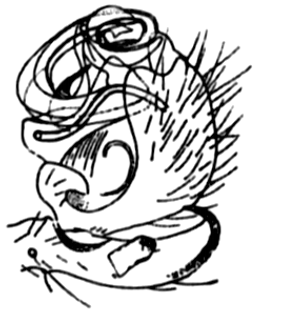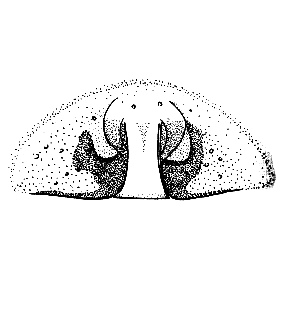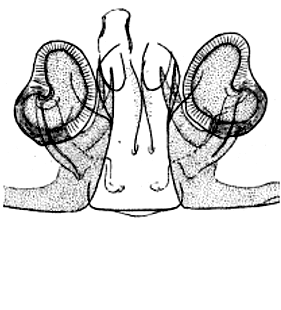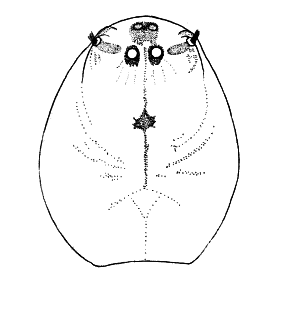Panamomops fagei Miller & Kratochvíl, 1939
Description
Tibial apophysis with long, uniformly bent distal part, its outer edge slightly serrated. Epigyne with copulatory opening hidden under lateral plates. Prosoma yellowish-brown, with dark spots. Legs yellowish. Opisthosoma grey-green.
Body length male: 1.5 mmBody length female: 1.5 mm
Additional information
in moss and litter layer of forests
Frequency: Rarely found
Character states from linyphiid key
Distribution
Phenology
| Jan | Feb | Mar | Apr | May | Jun | Jul | Aug | Sep | Oct | Nov | Dec |
 |  |
Figures
Distribution List
"No references" does not mean that the species does not occur in this country, but that we have not yet inserted the reference for it. We are working on it.
References
Frick H (unpubl.) .
Palmgren P (1950) Die Spinnenfauna Finnlands und Ostfennoskandiens III. Acta Zoologica Fennica 62: 1-43 ![]()
Pantini P, Isaia M (2019) Araneae.it: the online catalog of Italian spiders, with addenda on other arachnid orders occurring in Italy (Arachnida: Araneae, Opiliones, Palpigradi, Pseudoscorpionida, Scorpiones, Solifugae). Fragmenta Entomologica 51: 127-152 ![]()
Růžička V, Řezáč M (2022a) Seznam pavouků České republiky. List of spiders of the Czech Republic. Online at https://www.arachnology.cz/seznam-pavouku-cr-26.html and https://www.arachnology.cz/en/seznam-pavouku-cr-26.html ![]()
Samu F, Szinetár C (1999) Bibliographic check list of the Hungarian spider fauna. Bulletin of the British Arachnological Society 11: 161-184 ![]()
Wiehle H (1960a) Spinnentiere oder Arachnoidea (Araneae). XI. Micryphantidae-Zwergspinnen. Die Tierwelt Deutschlands 47: 1-620 ![]()
WSC (2024) World Spider Catalog. Version 25.5. Natural History Museum Bern, online at http://wsc.nmbe.ch (31.10.2024) doi: 10.24436/2 ![]()





